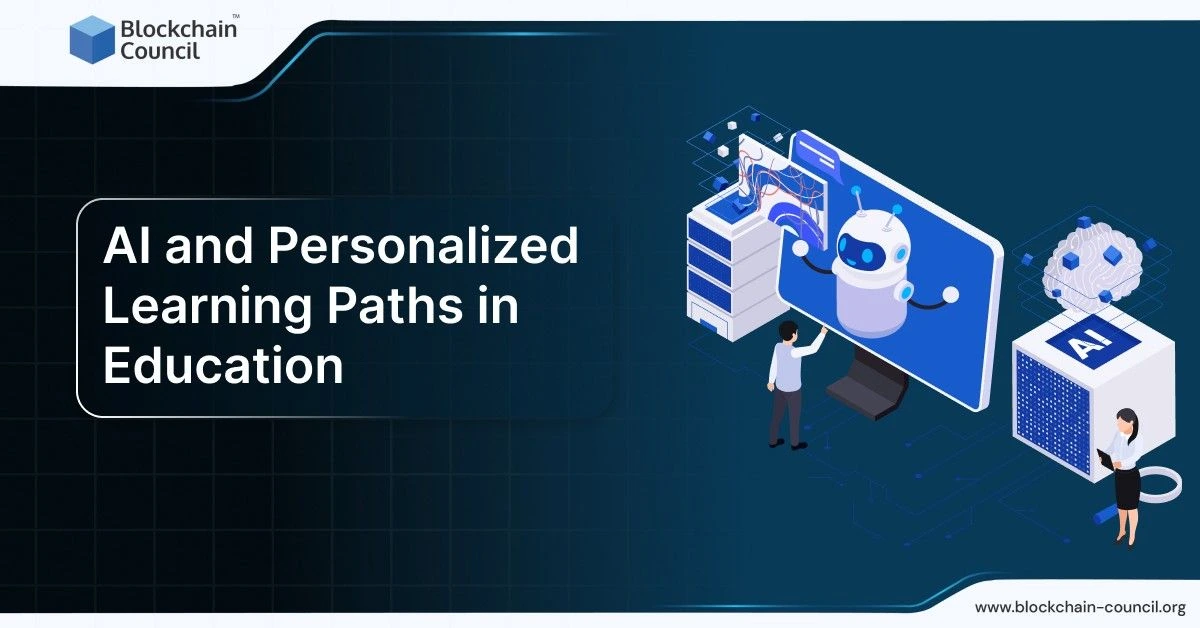
- Blockchain Council
- September 02, 2024
Summary
- AI Voice Generators utilize artificial intelligence to produce human-like speech, revolutionizing digital interaction and content consumption.
- These tools analyze vast voice data to replicate human nuances like tone and rhythm, making text-to-speech conversion remarkably natural.
- They find applications in virtual assistants, e-learning, and video voiceovers, enhancing accessibility and personalization.
- The process involves text analysis, phonetic conversion, voice selection, and synthesis using neural networks for authentic speech.
- AI Voice Generators offer benefits like realistic speech, diverse voice options, multilingual support, and cost/time efficiency.
- Real-life applications range from e-learning and content localization to audiobooks and virtual assistants, demonstrating their versatility.
- Top tools like VoiceOverMaker, Synthesia, and NaturalReader offer various features for different needs, from teamwork to personal use.
- Challenges include emotional limitations, technical imperfections, ethical concerns, data bias, and language recognition issues.
- Future advancements aim to improve emotional expression, reduce technical errors, establish ethical guidelines, diversify voice options, and expand applications.
- Despite challenges, AI voice generators promise a future where technology communicates naturally, transforming digital interactions and content creation.
In the era of digital innovation, Artificial Intelligence (AI) Voice Generators have emerged as a groundbreaking technology that is reshaping the way we interact with machines and consume digital content. These sophisticated tools, powered by AI, can convert text into natural-sounding speech, mimicking the nuances of human voice with remarkable accuracy. From powering virtual assistants, creating engaging e-learning modules, to generating voiceovers for videos, AI voice generators are finding applications across diverse sectors. This article aims to delve into the world of AI voice generators. We will understand what they are, exploring their workings, benefits, and the top tools available in 2024. As we navigate through this technological marvel, we will uncover how it’s not just about converting text to speech but enhancing accessibility, personalization, and efficiency in content creation like never before.
What is an AI Voice Generator? Simply Explained
An AI voice generator is an innovative software that uses artificial intelligence to produce human-like speech. It operates by analyzing vast amounts of human voice data, learning how to replicate the nuances of human tone, pitch, and rhythm through deep learning algorithms. These generators can craft voiceovers for videos, transform text into speech for accessibility, and even simulate conversation in virtual assistants. Unlike traditional text-to-speech systems that might sound robotic, modern AI voice generators deliver remarkably natural and convincing audio content.
This technology is widely used in various applications, including chatbots, audiobooks, navigation systems, and virtual assistants like Siri, Alexa, Cortana, and Google Assistant.
Also Read: What is Machine Learning and How Does It Work?
How Does an AI Voice Generator Work?
The process behind AI voice generators involves several steps to convert text into speech that sounds convincingly human:
- Text Input and Analysis: Initially, written content is fed into the system, which then analyses the text for its grammatical structure, punctuation, and semantics. This analysis helps in understanding the context, which is crucial for generating speech that feels natural.
- Phonetic Conversion: The AI breaks down the text into phonemes, the smallest units of sound in a language, preparing it for speech synthesis.
- Voice Selection: Users can choose from a variety of voices, accents, and dialects. The choice of voice can significantly influence the output’s authenticity and emotional resonance.
- Synthesis: Leveraging neural networks, the AI combines phonetic elements with the correct prosody—intonation, rhythm, and stress—to generate speech. This step is where the magic happens, as the AI transforms text into a voice that can express a wide range of human emotions and nuances.
- Customization and Integration: Modern AI voice generators allow for extensive customization, including adjustments to speed, pitch, and tone. This flexibility enables users to tailor the voice to their specific needs, whether for educational content, virtual assistants, or any other application. Furthermore, these generators are designed to integrate seamlessly into various platforms, enhancing accessibility and user experience across different technologies.
Also Read: How to Become an Artificial Intelligence Engineer
Benefits of AI Voice Generators
AI voice generators are transforming the way we create and consume audio content. With advancements in technology, these tools offer a range of benefits that enhance productivity, creativity, and accessibility. Here are some of the key advantages:
Realistic Speech
The latest AI voice generators are capable of producing audio that closely mimics human speech, making it difficult to distinguish between the two. This realism is achieved through advanced deep learning techniques that capture the nuances of human expression.
Variety of Voices
Users have access to an extensive library of voices, including different genders, accents, and age groups. This diversity allows for greater flexibility and customization in audio content creation.
Multilingual Support
These tools support multiple languages, enabling content creators to reach a global audience without the need for costly and time-consuming translation and voiceover services.
Voice Cloning and Customization
Some AI voice generators offer voice cloning features, allowing users to replicate their own voice or others (with permission) for various projects. This is particularly useful for maintaining brand consistency or for creating personalized content.
Cost and Time Efficiency
By automating the voiceover process, AI voice generators save significant amounts of time and money. There’s no need to hire voice actors or rent recording studios, and content can be produced at a much faster rate.
Accessibility and Engagement
These tools make content more accessible to individuals with visual impairments or reading difficulties and can increase engagement by localizing content in multiple languages.
Real Life Applications of AI Voice Generators
The real-world applications of AI voice generators are vast and varied, demonstrating their versatility across different sectors:
- E-Learning: AI voiceovers are widely used to create educational content, making learning materials more accessible and engaging for students across the globe.
- Content Localization: Brands use AI voice generators to localize their marketing materials, allowing them to connect with a wider audience by offering content in multiple languages.
- Audiobooks and Podcasts: Publishers and podcast creators are turning to AI to produce audiobooks and podcasts efficiently, enabling them to release more content at a faster pace.
- Video Production: From YouTube creators to professional filmmakers, AI voice generators are used to add voiceovers to videos, enhancing the overall viewer experience without the need for expensive equipment or talent.
- Virtual Assistants: AI-generated voices power virtual assistants, making them sound more natural and human-like, thereby improving user interactions with technology.
- Accessibility Tools: AI voice generators play a crucial role in developing accessibility tools, helping individuals with visual impairments or reading disabilities access written content in audio form.
Also Read: What is Jasper AI?
Top 10 AI Voice Generators
| AI Voice Generators | Key Features |
| VoiceOverMaker |
|
| Synthesia |
|
| NaturalReader |
|
| Resemble AI |
|
| Synthesys |
|
| Lovo.ai |
|
| Listnr |
|
| Altered Studio |
|
| Voiser |
|
| Uberduck |
|
Challenges and Limitations of AI Voice Generators
AI voice generators have dramatically improved, offering natural-sounding voices across various languages and accents. However, these advancements come with their set of challenges and limitations.
- Emotional Limitations: Despite significant progress, AI voice generators still struggle to convey complex emotions like empathy and sarcasm with the depth and subtlety a human voice can offer. This limitation can hinder the connection between the content and its audience, making it challenging to fully engage listeners.
- Technical Imperfections: Users may encounter technical issues, such as mispronunciations, unnatural pauses, or a robotic tone. These glitches can detract from the listener’s experience, making the content feel less authentic or engaging.
- Ethical Concerns: The rise of deepfake technology and AI voice cloning has sparked ethical debates about the potential for misuse, including identity fraud and the creation of misleading content. It’s crucial for creators to use these tools responsibly, adhering to ethical guidelines to prevent harm.
- Data Dependency and Bias: The quality and inclusivity of AI-generated voices depend on the datasets used to train them. If these datasets are biased or limited, it can lead to inaccuracies, reinforce stereotypes, and fail to represent diverse voices accurately.
- Accuracy in Professional Environments: Speech recognition needs to be highly reliable in professional settings, where a 90% accuracy rate may not suffice. The demand for near-perfect accuracy emphasizes the need for continual improvement in AI voice technologies.
- Language and Accent Recognition: Although AI voice generators support multiple languages, they can struggle with accurately recognizing non-English languages or heavy accents. This presents a challenge for global enterprises seeking to use these technologies across diverse linguistic landscapes.
Also Read: What is Midjourney AI?
Future of AI Voice Generation
The future of AI voice generation looks promising, with ongoing advancements addressing current limitations and expanding potential applications.
Improvements in Emotional Expression
Researchers and developers are continuously working to enhance the emotional intelligence of AI voice generators. Future iterations may better capture the nuances of human emotion, making interactions more relatable and engaging.
Technological Enhancements
As AI and machine learning technologies evolve, we can expect a reduction in technical imperfections. Future AI voice generators will likely offer more natural-sounding speech with fewer errors, improving the overall user experience.
Ethical Frameworks and Guidelines
The development of comprehensive ethical frameworks will be crucial in governing the use of AI voice technologies. These guidelines will help mitigate risks related to privacy, consent, and misuse, ensuring responsible use of voice generation tools.
Diverse and Inclusive Voice Options
Efforts to diversify training datasets will enhance the inclusivity and accuracy of AI-generated voices. This will ensure representation of a wider range of voices and accents, catering to a global audience.
Expanded Applications
AI voice generation technology will likely see broader adoption across various sectors, including healthcare, legal, and customer service. Innovative applications, such as documenting doctor-patient conversations or automating customer interactions, will become more prevalent, leveraging AI to improve efficiency and accessibility.
Conclusion
AI voice generators represent a significant leap forward in the synthesis of human-like speech, offering versatility, efficiency, and realism that were once thought impossible. As we’ve explored, these tools are not without their challenges, including emotional depth and technical imperfections. However, the continuous advancements in AI and machine learning promise to address these limitations, broadening the scope of possibilities for voice generation technology.
The future of AI voice generation looks promising, with potential applications expanding across industries, making digital interactions more natural and accessible. Whether for professional content creation, enhancing accessibility, or personal entertainment, AI voice generators are set to play a pivotal role in the digital age, bringing us closer to a world where technology speaks in a voice we can truly understand and relate to. As we move forward, it will be fascinating to see how these technologies evolve and integrate further into our daily lives, changing the way we communicate, learn, and entertain.
Frequently Asked Questions
What is an AI voice generator?
- An AI voice generator is a software powered by artificial intelligence that converts text into natural-sounding speech.
- It analyzes human voice data to replicate nuances like tone, pitch, and rhythm, producing speech that closely mimics human expression.
How do AI voice generators work?
- Text Input and Analysis: The software analyzes written content for grammar, punctuation, and context.
- Phonetic Conversion: It breaks down the text into phonemes, the smallest units of sound in a language.
- Voice Selection: Users can choose from various voices, accents, and dialects.
- Synthesis: Using neural networks, the AI combines phonetic elements with prosody to generate speech.
What are the benefits of using AI voice generators?
- Realistic Speech: They produce audio that closely resembles human speech, enhancing engagement.
- Variety of Voices: Users have access to diverse voices, allowing for customization.
- Multilingual Support: These tools can convert text into speech in multiple languages, expanding audience reach.
- Cost and Time Efficiency: They automate the voiceover process, saving time and resources.
What are some common challenges associated with AI voice generators?
- Emotional Limitations: They may struggle to convey complex emotions like empathy or sarcasm convincingly.
- Technical Imperfections: Users may encounter issues like mispronunciations or a robotic tone.
- Ethical Concerns: The rise of deepfake technology raises concerns about identity fraud and misleading content.
- Data Dependency and Bias: The quality of AI-generated voices depends on the datasets used, which can lead to inaccuracies and biases.





































































 Guides
Guides News
News Blockchain
Blockchain Cryptocurrency
& Digital Assets
Cryptocurrency
& Digital Assets Web3
Web3 Metaverse & NFTs
Metaverse & NFTs
